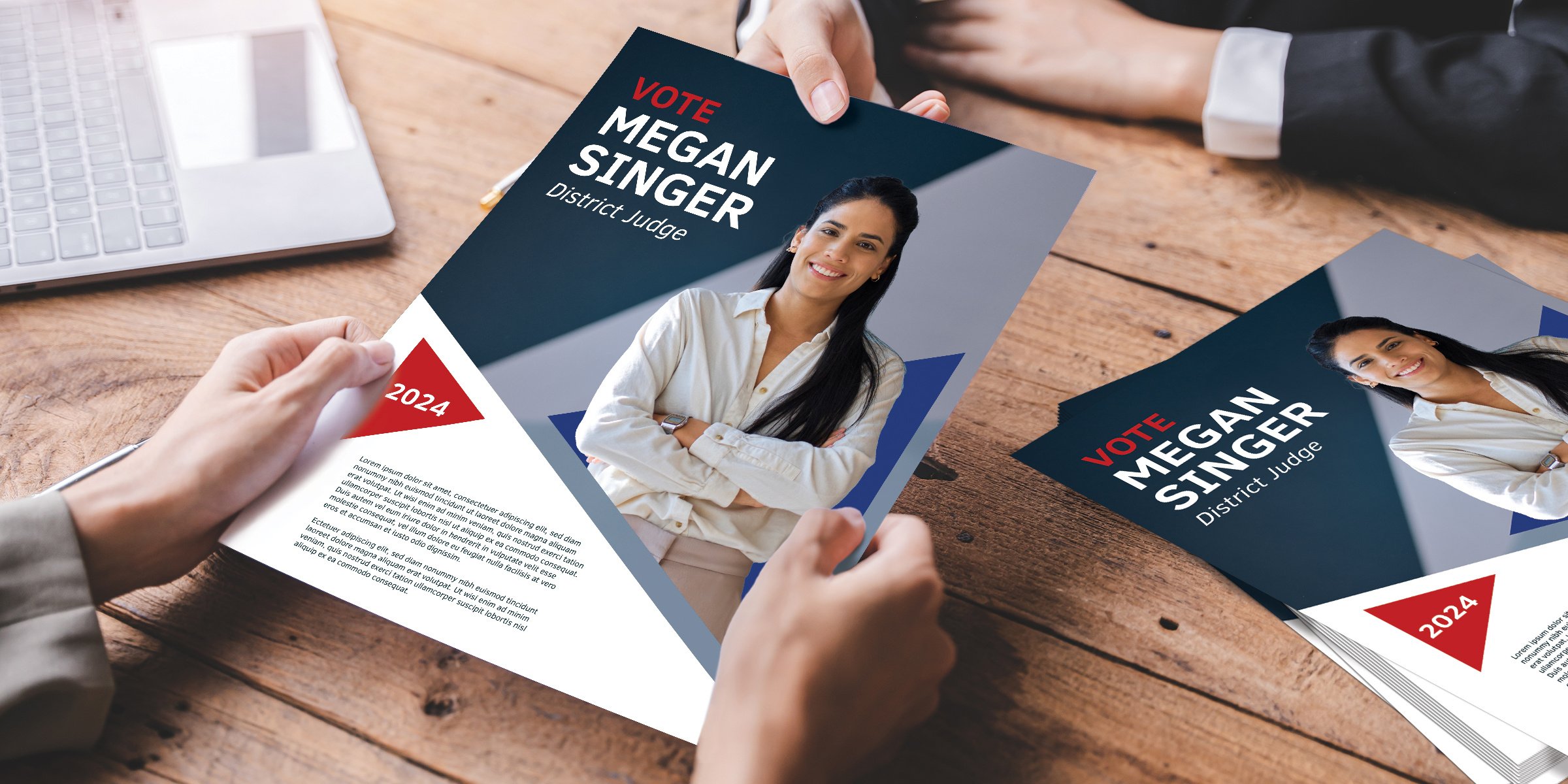Political print buyers have decisions to make: Should they focus on print material or should they focus on digital channels? Like most brand marketing, the answer lies somewhere on a continuum based on campaign objectives, target demographics, budget, and timing. There are essential elements in the decision-making process:
- Brand Recognition: Early in a campaign, when recognition for the candidate or legislation and credibility is crucial, print materials like signs, banners, and brochures are invaluable. They provide a constant reminder of the candidate or proposition and the platform.
- Event Promotion: For promoting events or rallies, a combination of print and digital is effective. Use digital tools for rapid, wide-reaching event announcements and follow up with print materials at the event for detailed information distribution.
- Targeted Communication: Use digital platforms for targeting specific groups with customized messages, especially when addressing younger voters or those in tech-savvy areas. Supplement with print and consider Every Door Direct Mail (EDDM) mailing programs in areas with less digital penetration or where direct, personal communication is more effective.
- Budget Efficiency: Consider the budget. Digital campaigns can be less expensive and easier to modify but verify your true costs for digital execution. Remember to account for the longevity of print with its longer-lasting visibility in public spaces as you budget.
Combining the strengths of both print and digital media ensures a comprehensive strategy that leverages the unique benefits each offers. By understanding when and how to employ each type of communication, political campaigns maximize their impact, engaging voters effectively and driving successful outcomes.
The Power of Marketing
Research studies continue to demonstrate the enduring power of print in political advertising. Print media offers a unique level of trust and permanence that digital platforms can struggle to match, particularly among multicultural voters. A study from the Refuel Agency found that multicultural audiences are significantly more likely to trust print media over general market media. This trust extends to older generations, who prefer print for its reliability and ability to keep them informed, and even younger generations find print less intrusive compared to digital ads.
The efficacy of political print marketing remains significant, despite the digital age's influence on campaign strategies. Here are some vital statistics and insights that underscore the importance of print in political campaigns:
Voter Reach and Engagement: Political marketing, particularly through direct mail and other print media, has a significant impact on voter engagement. Studies have shown that direct mail can increase voter turnout by 1-3%, which can be decisive in close races, but there is more to consider. Printed campaign materials such as brochures and flyers also tend to stay in homes longer than digital ads remain visible on screens. This prolonged exposure can lead to greater engagement and recall, influencing voter behavior positively.
USPS research calls direct mail “the most credible political advertising channel for 63% of surveyed voters — with a majority (56%) also continuing to believe direct mail includes more facts than other channels — which contributes to voters taking more action after reading direct mail pieces.”
Targeted Impact: Print materials like direct mail have a proven track record of effectively targeting specific demographic groups. For political campaigns, this can translate into higher voter turnout rates among targeted groups, since direct mail can be personalized and tailored to the interests and concerns of specific voters.
Enhanced Recall: Research has shown that people engage differently with print media compared to digital. A neuromarketing study by the USPS Office of the Inspector General and Temple University’s Center for Neural Decision Making found that printed materials have a more significant impact on recall and engagement due to the physical act of handling the materials.
Synergy with Digital: Combining print with digital strategies can amplify the effectiveness of political campaigns. For example, print materials that include QR codes or URLs that direct to digital platforms can create a multi-channel experience that reinforces the campaign message across different mediums.
Remember that your 4over team has experience in crafting multichannel campaigns that include print and digital components. Talk to them about the types of clients you serve to build a program that wins.



